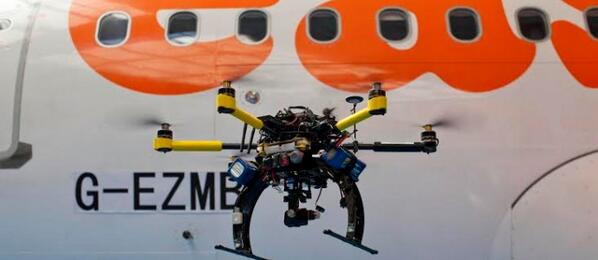After a flurry of activity at the end of 2015 and the beginning of 2016, the United States finds itself in the midst of an emerging (if slowly) regulatory regime governing the use of Unmanned Aircraft Systems, also known as UAS or, more commonly, “drones.” Although the FAA is still working through the process of integrating UAS into the National Airspace System (NAS), a regime is beginning to emerge that gives UAS operators a better idea of what is expected of them in order to operate UAS safely and remain compliant.
For those in the maintenance world, there are a few now-established rules and guidance that one should be aware of if seeking to work with or on drones in the future. Note that these requirements apply to small UAS (those under 55 pounds) where the FAA seems to be currently focusing most of its attention.
Use in Maintenance
There have been a number of stories recently of drones being used to perform inspections of aircraft as part of the maintenance process. The appeal of this method is quickly apparent, as it allows an individual to rapidly inspect an aircraft from the ground without the need for mechanical lift equipment or stands that must be moved along the length of the aircraft in order for an individual to see all angles of the aircraft. However, before grabbing a drone and a GoPro and going to work, it is necessary to consider a number of practical and legal issues presented by this technology.
From a practical perspective it is necessary that only individuals with the proper training be permitted to operate a UAS used for inspection. There are at least two reasons for this: first, it is important to avoid a scenario in which a mis-controlled drone strikes the aircraft being inspected, causing or exacerbating damage, or strikes equipment or persons at the maintenance facility causing damage or injury. (A quick YouTube search will reveal the shocking number of ways people can find to crash a drone.) Second, it is vital that the person operating the drone for purposes of inspection is able to satisfy the inspection requirements established by the applicable manuals.
At this point it is necessary to establish an important line of demarcation between practical and legal concerns. If you are seeking to use a drone for inspection purposes in your maintenance facility, and your operations occur exclusively indoors, the FAA’s jurisdiction over your use of drones is practically nothing. This is because the FAA’s authority—and the NAS—do not extend inside of buildings and hangars. It is only when you operate a drone outside that the FAA’s statutory authority kicks in and you become subject to its regulations. Therefore, if you wish to use a drone indoors for the purposes of inspection, you are free to do so, provide you take the necessary precautions to guard against injury and other liability.
Once you step (or fly) outside—and into the FAA’s jurisdiction—a significant set of regulations attach, or will soon attach. This is because the FAA regulates the use of UAS when they are operated for business purposes. The same practical considerations apply.
As of this writing, the FAA’s Small UAS Notice of Proposed Rulemaking is still being dispositioned. That means that in order to operate a UAS for business purposes, you must still obtain from the FAA a Section 333 exemption. This exemption allows a business to legally operate a UAS for business purposes. The exemption includes a blanket Certificate of Waiver or Authorization that permits operation with certain restrictions. However, because most maintenance operations are based on or near airports, a specific COA addressing your particular airspace will also likely be necessary. This COA will spell out the specific operational parameters for your use of drones in the performance of inspection and maintenance.
In addition to the Section 333 exemption and COA, you will need to make sure that your UAS is registered with the FAA. As of December 21, 2015, all UAS between 0.55 pounds and 55 pounds are required to be registered. Registration costs $5 and can be done online. Each registration is valid for three years, and a single registration number can be used on all of your drones. Although there is pending litigation over the validity of the registration rule, a cost benefit analysis suggests that it would be in an operator’s best interest to make sure its UAS is registered to avoid a possible penalty, which could reach as high as $27,500 for civil penalties and $250,000 for criminal penalties.
Finally, because the United States Code requires an aircraft operating in the NAS to have a certificated pilot in command, the operator of a drone must hold an airline transport, commercial, private, recreational, or sport pilot certificate.
Once the Small UAS NPRM becomes a Final Rule, several other requirements are expected to go into effect. These will include limitations on operations around people, use of spotters, and line of sight requirements. We can also expect UAS-specific pilot testing requirements to emerge as the rule calls for a specific UAS operator certificate. This may be beneficial if it results in reduced restrictions on who may operate UAS.
